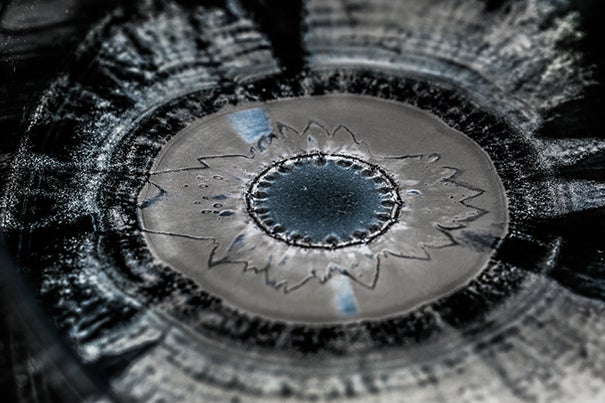 |
| Eye Beauty |
In the previous post, which discussed changes in virus genomes, I mentioned a question ("'are the changes the result of damage done to the single-celled hosts of the SARS-CoV-2 viruses?'") while discussing damage to the host cells (microbes) of the SARS-CoV-2 virus.
The issue of genomic alteration by way of antibiotic induced lysis [microbe death] is a subject that should be considered when discussing the cause of changes in SARS-CoV-2 viruses.
II. The Concept
The concept has been discussed in scientific journals since at least 1957 (Penicillin-Induced Lysis of Escherichia coli) and as recently as this year:
"Bactericidal antibiotics kill bacteria by perturbing various cellular targets and processes. Disruption of the primary antibiotic-binding partner induces a cascade of molecular events, leading to overproduction of reactive metabolic by-products. It remains unclear, however, how these molecular events contribute to bacterial cell death. Here, we take a single-cell physical biology approach to probe antibiotic function. We show that aminoglycosides and fluoroquinolones induce cytoplasmic condensation through membrane damage and subsequent outflow of cytoplasmic contents [including virus RNA] as part of their lethality.
...
Previous work has shown that the intracellular accumulation of promiscuously reactive metabolic by-products induces widespread cellular dysfunction and contributes to antibiotic lethality [microbe death]. However, the mechanisms underlying how reactive metabolic by-products, and the accompanying phenotypic changes, [variants, mutants] contribute to cell death have remained unclear."
Let's focus on a few meanings before going on:
characterized by or involving indiscriminate mingling or association, especially having sexual relations with a number of partners on a casual basis.
consisting of parts, elements, or individuals of different kinds brought together without order.
indiscriminate; without discrimination.
casual; irregular; haphazard."
The overuse of antibiotics is promiscuous and leads to genomic disruptions:
The observable characteristics in an individual [including microbes/viruses] resulting from the expression of genes; the clinical presentation of an individual [including microbes/viruses] with a particular genotype."
"phenotypic ...
The observable physical or biochemical characteristics of an organism [including microbes/viruses], as determined by both genetic makeup and environmental influences.
The expression of a specific trait, such as stature or blood type, based on genetic and environmental influences.
An individual or group of organisms [including microbes/viruses] exhibiting a particular phenotype."
Thus, there should be no reluctance to use deductive reasoning to hypothesize that the haphazard microbe/virus changes being shown in Dredd Blog posts are, in whole or in part, the results of toxic-chemical induced Lysis, i.e., the death of microbes (On The Origin Of The Home Of COVID-19, 2, 3, 4, 5, 6, 7, 8, 9, 10, 11, 12, 13, 14, 15, 16, 17, 18, 19, 20, 21, 22, 23, 24, 25, 26, 27).
And when host microbes go down in flames the nucleotide/gene replication machinery inside them will be damaged, and/or destroyed.
They will, as the Lysis phase progresses from bad to worse, produce 'variants', 'mutants', and defective genetic output (which is released into the blood stream or gut microbiome] on their way down (Omicron (OMC!), 2) [see first video below].
IV. Closing Comments
The 'Omicron Variant' is likely one of many variations caused by the antibiotic wars causing toxic-chemical induced Lysis [microbe death] as discussed in the literature (e.g. here and here).
So, it is not a fantasy, it is a scientific reality.
An immediate, thorough investigation into the deceit of Big Pharma, in the manner of the investigation into Big Tobacco and Big Oil, should be a priority [see third video below].
The previous post in this series is here.


